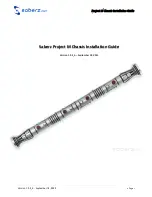
Directory-enabled remote management 170
name server. If the name service goes down or cannot be reached, DNS restrictions cannot be matched
and will fail.
DNS-based restrictions can limit access to a single, specific machine name or to machines sharing a
common domain suffix. For example, the DNS restriction, www.hp.com, matches hosts that are assigned
the domain name www.hp.com. However, the DNS restriction, *.hp.com, matches any machine
originating from HP.
DNS restrictions can cause some ambiguity because a host can be multi-homed. DNS restrictions do not
necessarily match one-to-one with a single system.
Using DNS-based restrictions can create some security complications. Name service protocols are
insecure. Any individual with malicious intent and access to the network can place a rogue DNS service
on the network creating fake address restriction criteria. Organizational security policies should be taken
into consideration when implementing DNS-based address restrictions.
How user time restrictions are enforced
Administrators can place a time restriction on directory user accounts. Time restrictions limit the ability of
the user to log in (authenticate) to the directory. Typically, time restrictions are enforced using the time at
the directory server, but if the directory server is located in a different time zone or a replica in a different
time zone is accessed, then time zone information from the managed object can be used to adjust for
relative time.
The directory server evaluates user time restrictions, but the determination can be complicated by time
zone changes or authentication mechanism.
Creating multiple restrictions and roles
The most useful application of multiple roles includes restricting one or more roles so that rights do not
apply in all situations. Other roles provide different rights under different constraints. Using multiple
restrictions and roles enables the administrator to create arbitrary, complex rights relationships with a
minimum number of roles.
For example, an organization might have a security policy in which LOM administrators are allowed to
use the LOM device from within the corporate network but are only able to reset the server outside of
regular business hours.







































